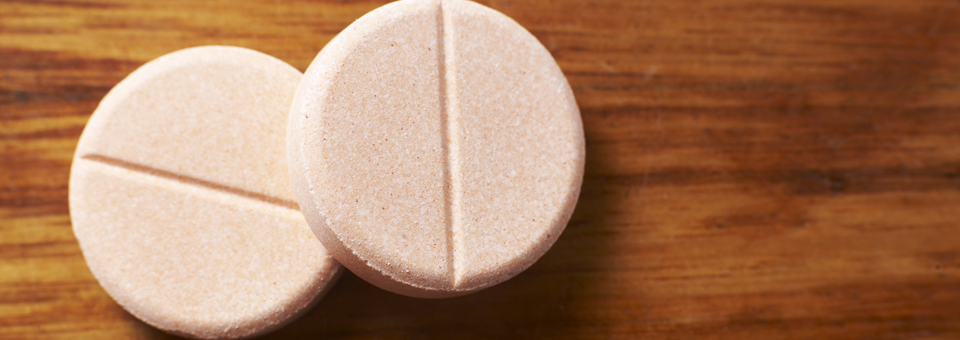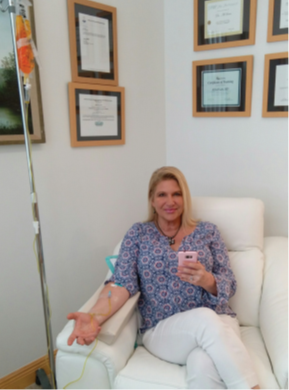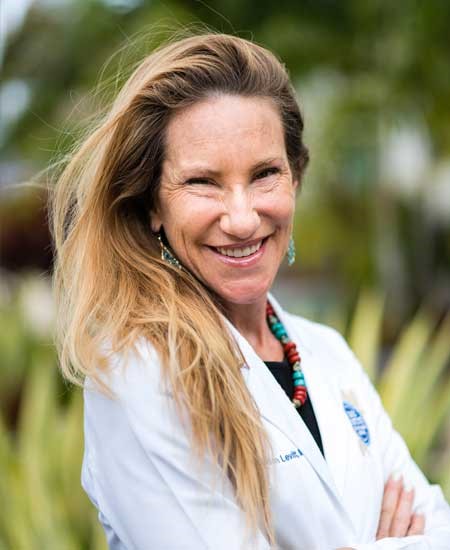

Sales of vitamin C have tripled in the past six weeks.
But unfortunately, the effect it’ll have on you, your neighbors, friends and loved ones is probably nothing.
Why? Because, your body can only absorb 500 mg of this kind of supplement at a time — and that’s nowhere near enough.
That’s why the Sears Institute delivers high dose IV therapy to many of our patients. IV therapy can safely deliver 5,000 mg of vitamin C in about an hour.
IV therapy allows the nutrient to bypass your digestive system and go directly into your cells. And bioavailability is 100%.1
Where Does Vitamin C Deficiency Come From?
Of course, a lot of conventional doctors still dismiss supplementing with any kind of vitamin C supplement as a waste of money. And that’s a tragic mistake because every single person is born with a vitamin C “deficiency.”
You see, humans are one of the only animals on the planet that can’t make their own vitamin C. The others are bats, guinea pigs, apes and fish.
You still have the gene, but the forces of evolution turned it off. And that’s bad news considering how little vitamin C we get from our food these days.
Researchers estimate — and I agree — that if our bodies still made vitamin C, we would produce somewhere about 5,000 mg a day. Today, we’re lucky if we get 200 mg to 300 mg.
Increase Your Second Line of Defense at Home
I understand that right now getting IV therapy isn’t an option for everyone… So here’s what I suggest you do to get more vitamin C at home:
- Maximize absorption. I recommend you take liposomal-encapsulated vitamin C. Liposomal is a technique that wraps the vitamin C molecule in a thin layer of fat.
These fats are called phospholipids — and that’s the same thing your cell membranes are made up of. That allows for easy delivery and 98% absorption.
You can find liposomal vitamin C as a liquid, in capsule form and even as packets of orange-colored gel that you take as a shot. - Eat these high vitamin C foods. You don’t have to eat citrus fruits every day to get vitamin C. In fact, there are a lot of foods that have more of this life-saving vitamin than the orange. Here are three of my favorites:
- Goji Berry. When you compare goji berries and oranges weight for weight, goji berries provide up to 500 times more vitamin C! They are also a rich source of zinc. Research at Case Western Reserve University has shown that zinc can shorten the length and severity of a cold.2 Zinc deficiencies are more likely to occur as we age.
- Camu-Camu. This South American berry is a rich source of vitamin C at 2,700 mg per 100 g. It has 60 times more vitamin C than an orange! Camu-camu is also a potent antiviral. I like adding dried powder to smoothies or yogurt. Start with one teaspoon a day.
- Acerola Cherry. I call this little berry the queen of all fruits. Every 100 grams has 1,678 mg — more than 30 times the vitamin C of strawberries! Here in Florida, we can grow our own organic berries all year long. But if you don’t live in an area where you can grow this shrub, I suggest supplementing with an organic dried powder to mix into a sweeter drink to offset the slightly bitter taste.
If you live locally, we continue to deliver these vitamin C IVs upon request. Call 561-784-7852 to schedule today with our front desk.
Patients at the Sears Institute regularly receive between 3,000 mg and 5,000 mg a day. During a pandemic like this, 7,000 mg to 10,000 mg is recommended.
In Gratitude,

Dr. Alison Levitt
 |
Dr. Alison Levitt brings more than 23 years of experience in regenerative medicine to the Sears Institute to give her patients total health and wellness – both inside and out.
She specializes in empowering patients to take back their health by maintaining their optimal health. Her patients get the most advanced regenerative medicine therapies to help reverse their health conditions.
References
1 Sechi G, et al. “Reduced intravenous glutathione in the treatment of early Parkinson’s disease.” Prog Neuropsychopharmacol Biol Psychiatry. 1996;20(7):1159-1170.
2 Hulisz D. “Efficacy of zinc against common cold viruses: An overview.” J Am Pharm Assoc (2003). 2004;44(5):594-603.








